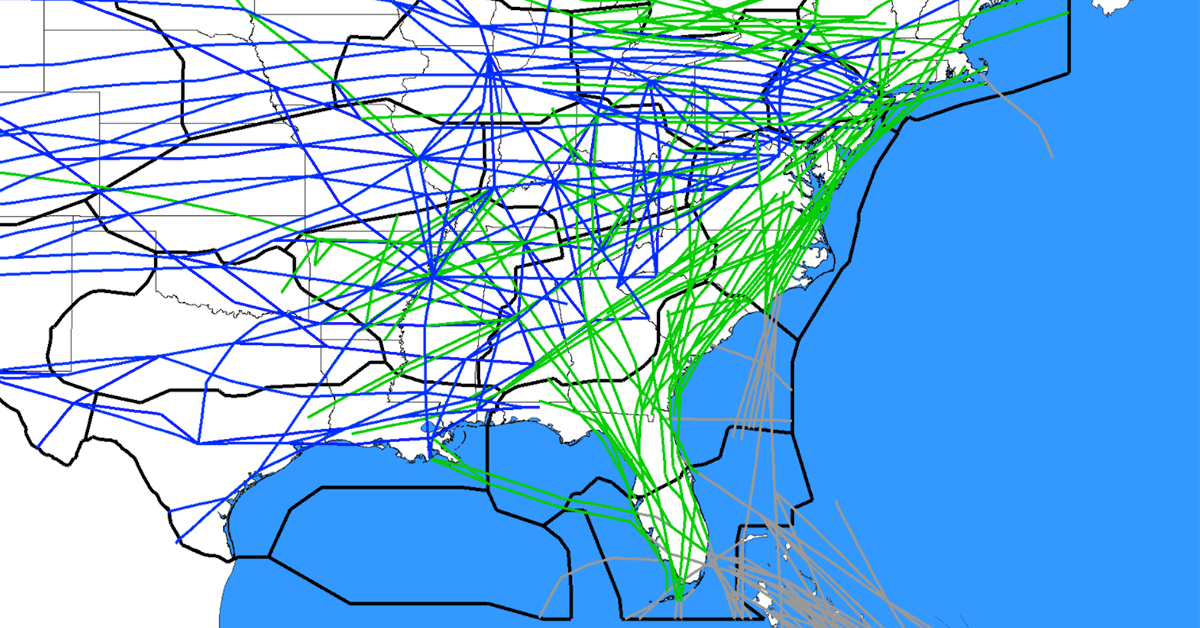
April 8, 2021
Changes are coming to the Florida Metroplex and Northeast Corridor Atlantic Coast Routes (NEC ACR), updates the FAA expects will improve safety and efficiency in busy airspace.
Fifty-four new procedures will be published on April 22, mainly impacting central Florida. Thirty-seven of the new procedures will be implemented on that date with 17 SIDs and STARs temporarily delayed, as indicated by NOTAMs. The SIDs and STARs, mainly in the central Florida area, are expected to be implemented in August.
Procedure changes will be implemented at Orlando International Airport (MCO), Orlando Executive Airport (ORL), Orlando Sanford International Airport (SFB), Punta Gorda Airport (PGD), St. Pete-Clearwater International Airport (PIE) and Tampa International Airport (TPA), among others.
New T routes also will be effective April 22. Although Victor routes will still be available, the FAA encourages operators to file for the new T routes. Many of the Victor routes will be decommissioned over time.
General aviation operators, partly due to the large number of independent entities, tend to adopt route changes at their own pace; therefore, the FAA is working with flight planning and routing organizations to encourage use of these routes.
Meanwhile, major updates are planned for the NEC ACR. Full implementation of the changes has been postponed due the COVID-19 public health emergency and training challenges. Beginning this fall, seven Q routes will be implemented. ZDC ultra-high sector 30 will be implemented on Sept. 9. Overall, almost 40 Q Routes and Y routes will replace north-south high-altitude roue structure along the East Coast. These routes will also decrease reliance on ground-based navaids.
“Operators may experience some increases in fuel and time efficiencies as a result of the NEC ARC updates,” said Ernie Stellings, NBAA Air Traffic Services senior manager. “Changes to the Florida Metroplex will not only lead to efficiencies but also increase safety in busy airspace. These changes are welcome improvements, especially as business aviation traffic increases during the COVID pandemic recovery.”


 International Business Aviation Council Ltd.
International Business Aviation Council Ltd.